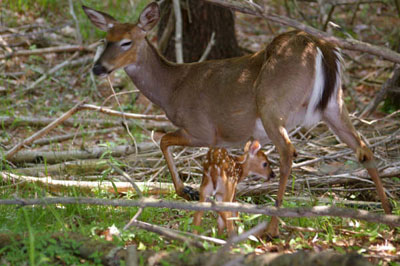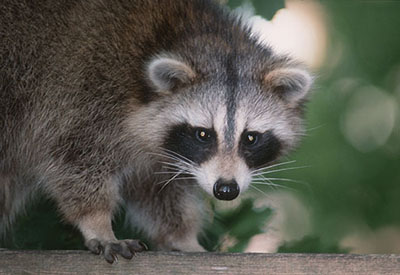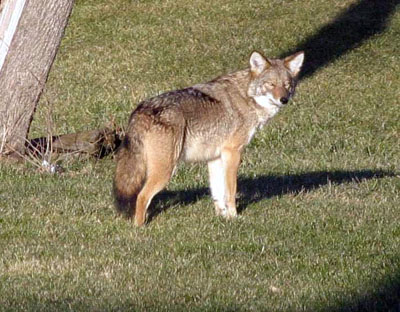Prince Edward County, Ontario, Canada
Me and Other Animals
ME AND OTHER ANIMALS
by David Hall
I share my home with animals, haphazardly and unintentionally. I thought at first that animals were a nuisance and with usual urban logic thought they should be dealt with. Call someone. I resisted this tendency preferring a laissez-faire attitude and was alternately rewarded and frustrated by sights and experiences I would have missed if I had pursued a course of proprietary ignorance.
 What seems is not always what is. The bucolic countryside and its postcard setting are full of life and a parallel society other and older than ours holding to its own values. Our civilized world is divorced from the wild world surrounding it and we are allowed to pass through but not be part of any world other than the version we choose.
What seems is not always what is. The bucolic countryside and its postcard setting are full of life and a parallel society other and older than ours holding to its own values. Our civilized world is divorced from the wild world surrounding it and we are allowed to pass through but not be part of any world other than the version we choose.
One hot August afternoon I watched a young doe grazing in the long grass no more than 50 yards from me. She paused, raised her head to look at me, her dismissive expression conveying ownership. I was the interloper. I was loath to move, not used to seeing wild animals so close. She raised her head again and ambled unhurriedly, white tail flicking to disappear into the forest edge, only then did I see two others camouflaged in the dappled shade. I understood that I shared this space. I became more observant, learned to look for the anomalies in the landscape. I have watched deer graze at dusk when almost invisible, move gracefully through fields and float effortlessly over fences. I watched awestruck one morning as three small young deer sauntered through the meadow. Starlings had covered the grass searching for small black spiders that emerge in spring. One deer nosed a starling. It hopped away. The deer followed to nose the starling. It hopped away and this game continued in a widening circle, the starling flying the deer prodding and loping after until the starling, tired of the game flew away.
Rabbits live under the front deck. They enjoy gardening and trim my roses and hydrangeas, unfortunately in January. I would prefer their help in April but they have their own gardening guide. This is unsettling as these are my gardens but accepting accommodation means accepting responsibility for maintaining that accommodation.
Raccoons are another matter, likeable but frustrating in their destructiveness. They raid bird feeders, pulling off roofs, breaking and tumbling them to the ground. They fight and argue like dysfunctional families loudly and in public and always at night. I waged a battle over a bird feeder, filling it each morning, then finding it empty on the ground the following morning. It was filled and replaced and the cycle continued. I became frustrated with the raccoon and with myself – I did not know how to handle the problem – the raccoon knew very well. I took action. I waited until dark then went outside just as the raccoon was coming out of its hollow tree directly in front of my house. I waved my flashlight wildly and roared to create as much display and  confusion as I could. I heard the raccoon scrambling down into its hollow, claws scrabbling on the rough bark. I walked to the tree with the feeder and peed on the trunk to stake out my territory in no uncertain terms (fortunately I live in isolation as roaring, waving lights and peeing outside are best done in isolation). I felt satisfied and superior. The next morning the feeder lay empty on the ground. That night I took it into the house intending to return it to the tree and the birds the following morning. I had won a cheap, unsatisfying victory. I have not yet found a solution but I intend to persevere to maintain the accommodation.
confusion as I could. I heard the raccoon scrambling down into its hollow, claws scrabbling on the rough bark. I walked to the tree with the feeder and peed on the trunk to stake out my territory in no uncertain terms (fortunately I live in isolation as roaring, waving lights and peeing outside are best done in isolation). I felt satisfied and superior. The next morning the feeder lay empty on the ground. That night I took it into the house intending to return it to the tree and the birds the following morning. I had won a cheap, unsatisfying victory. I have not yet found a solution but I intend to persevere to maintain the accommodation.
Some of my property is wetland, (wetland is tonier than swamp); there are beaver in the pond in the wetland. A screen of ash and maple trees forms the forest edge between wetland and meadow. Beaver like trees. They like to cut down trees that are four or five inches in diameter, sometimes larger. They are efficient. They mark the trees to be cut then fell them in different directions so one does not lie across another. They limb the fallen trees and take the branches to their lodge then return to cut the trunks into lengths to remove them over a roadway they create by dragging all lumber over the same route. It’s easier that way. They wait several years until the offshoots of culled trees have grown then they cull these. I was told the beaver are “farming”. I have embarked on a habitat restoration and managed forest program turning my property into an environmental zone and I ponder the logic of planting trees while beaver are eating the forest. I also peed on their roadway but do not believe it had any effect (perhaps human fever?).
Fishers are yet another matter, muscular carnivores with large claws and sharp teeth. A family had moved into my cellar, a plumber discovered them when the female took a swing at his head and missed. I had no idea they were in residence. I called the area trapper (wildlife tech) and we checked the cellar very carefully. He said he would put out two traps, one at the entrance to the cellar and the other in the meadow nearby. He asked if I had any bait like fresh beaver. I said no but that I could defrost a chicken breast if that would do. He demurred saying he would find road kill, returning the next morning with “Mr. Squirrel” in a shopping bag. He said that if there was no result within two days we could assume the fishers had left. I was awakened that night by a sound at the meadow trap. A raccoon had managed to extract Mr. Squirrel and was eating him noisily. The wildlife tech returned in the morning just as the raccoon made its escape. We concluded the fishers had left and that everything had turned out well, none was killed. That February the fishers returned, managing to get into a dry cistern under my bedroom. I heard them break in one night and settle into the far corner under my closet. I did nothing for several days trying to think through this new problem. I tried classical music but they were fans. They were destructive in other-than-raccoon-ways. They ate the starlings nesting in the hydro meter box beside the front door. They ambushed the rabbit living under the front deck. They cleared the swallow nests from above the dining room and library doors. I suspect they ate the Canada geese living in the wetland as well as the robins in the garage and the killdeer who nested in the centre of the drive and threatened every vehicle. Rodents disappeared altogether as did creative gardening. I could have called the wildlife tech but this would have meant their deaths. I had to restore balance through wit and guile. I made notes of the times of their comings and goings. I prepared to close the opening with a plywood panel.
 One cold winter night I heard them leave and piling out of bed I threw on some clothes and kneeling in the snow and darkness screwed the panel in place. I had won, well actually I had not as the next night I heard one trying to get out. I had trapped one inside. I could not let it die. I got out of bed and went outside, knelt by the opening and started to unscrew the panel when I noticed the fisher pushing the panel from the other side. This was not good. I was alone in the middle of the night with a wild carnivore ½” away. I decided to be reasonable and said in a calm voice, “Go back and I will have this panel off shortly then you can come out.” I did and it did, leaving early the next morning after which I replaced the panel. I have had no further problems although someone is living in the attic over the garage.
One cold winter night I heard them leave and piling out of bed I threw on some clothes and kneeling in the snow and darkness screwed the panel in place. I had won, well actually I had not as the next night I heard one trying to get out. I had trapped one inside. I could not let it die. I got out of bed and went outside, knelt by the opening and started to unscrew the panel when I noticed the fisher pushing the panel from the other side. This was not good. I was alone in the middle of the night with a wild carnivore ½” away. I decided to be reasonable and said in a calm voice, “Go back and I will have this panel off shortly then you can come out.” I did and it did, leaving early the next morning after which I replaced the panel. I have had no further problems although someone is living in the attic over the garage.
I find talking to animals has a calming effect. Whenever my dog Fergus did something inappropriate I would have a chat with him explaining his transgression and possible future course of action. He would look at me intently, cock his head from side to side then lick my face. I have no idea what this meant but we were always great pals.
Coyotes are always around. I see them occasionally crossing a field or trotting along the trail behind my house. I sometimes hear them at night, their high pitched yipping piercing the darkness. The kitchen was renovated last winter. I was helping the installer load his van in the early evening when we heard coyotes so close we could hear their snarls. I was struck forcibly by the contrasting conditions of the contemporary kitchen, the civilization of my home, and the primeval savagery and sounds we were hearing from that other society. As I was walking the next morning I saw one small part of a deer’s leg with small black hoof attached and thought of that playful deer I had watched the summer before, the one that allowed itself to be distracted by a bird, the one that did not seem to know the society it inhabited.
David Hall lives on Mitchells Crossroad, in Prince Edward County